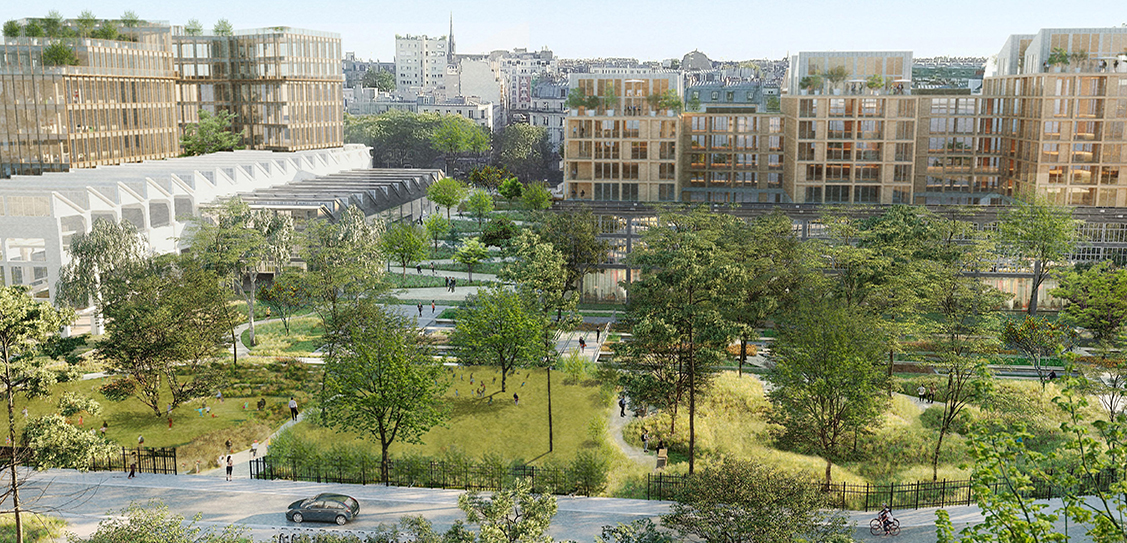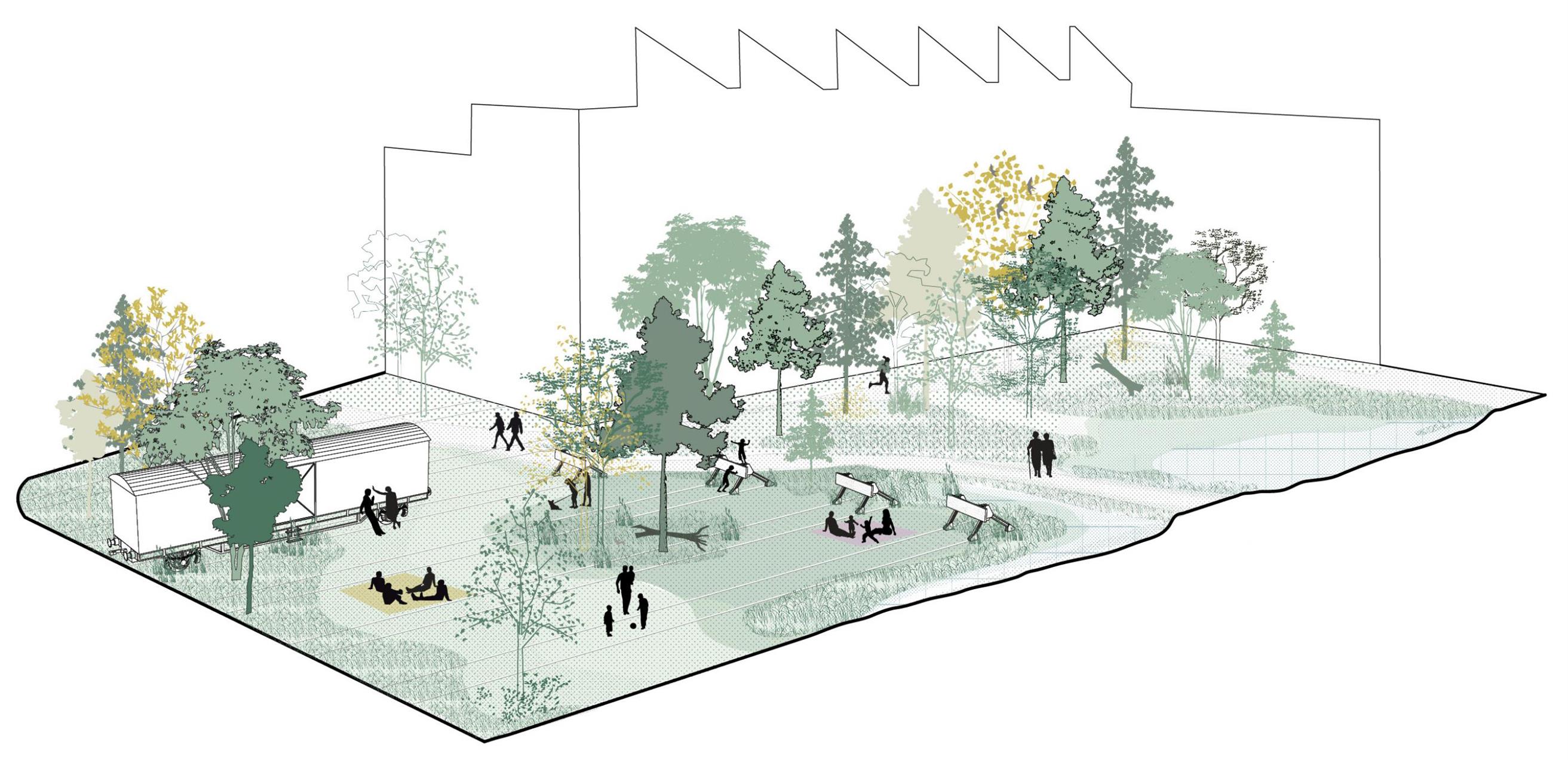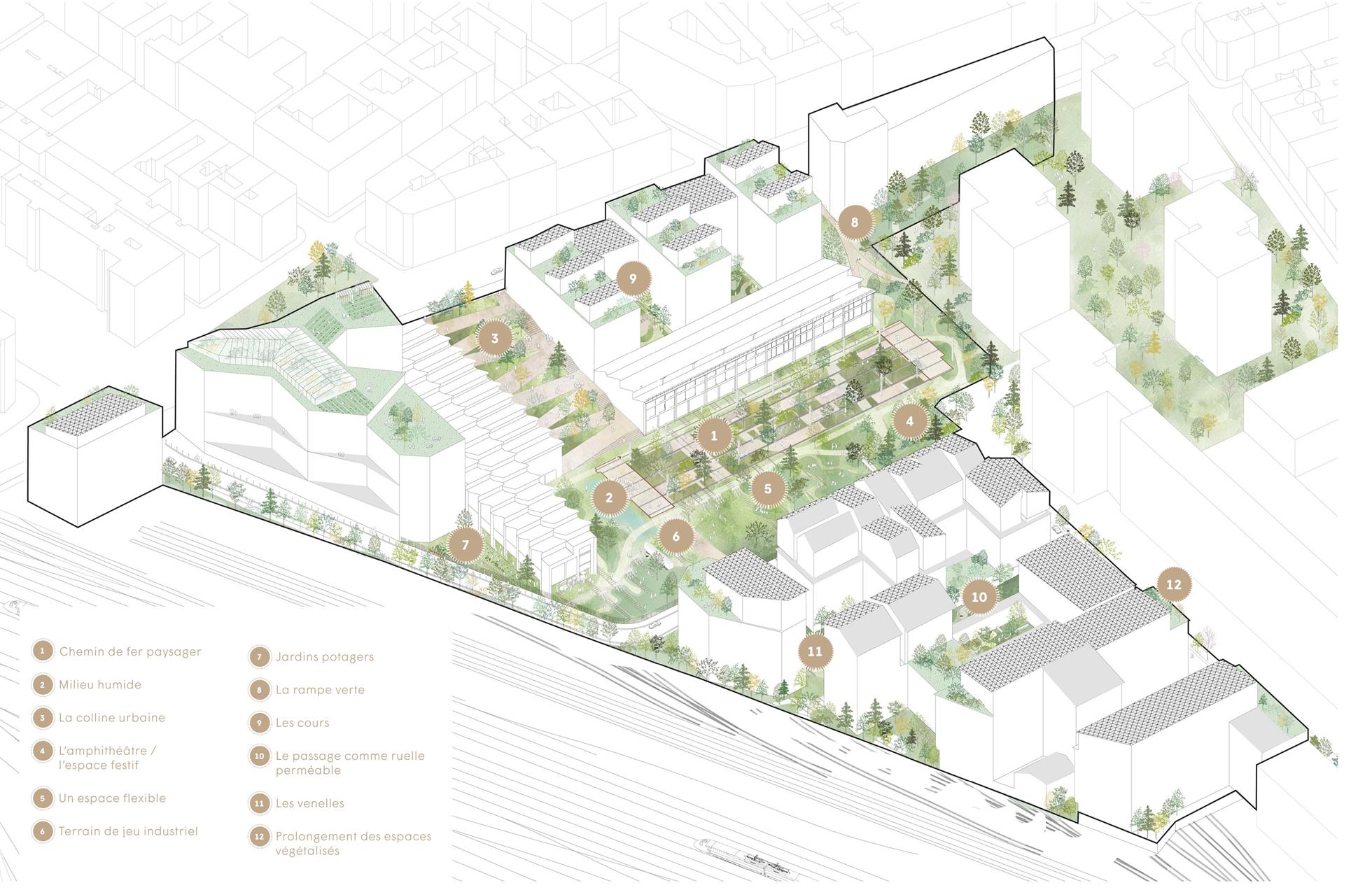Railways and heavy industry are reused and transformed into a new 3.7 hectare carbon neutral ‘ecosystem neighborhood’ based on nature-based design solutions, strengthened social cohesion and on-site renewable energy production. The neighborhood will include 1,000 new residents, big public parks, offices, a theater, public school, industrial design incubators, a graduate school of design, food courts and urban farming, all in the heart of Paris.
The team’s winning project for Ordener-Poissonniers “Jardin Mécano” (“Mechanical Garden”) creates a new urban ecosystem by preserving the site’s remarkable industrial heritage while adding an abundance of green, nature-based public spaces and carbon neutral architecture, creating a socially sustainable urban development for the heart of the 18th arrondissement of Paris.
The new neighborhood will include a mix of social and private housing for 1,000 new residents and 36,500 m2 of industrial design, arts, food and tech; including a new public school, a graduate school of design, offices, industrial design incubators, a cinema complex, a theater, a food court, shops and services, urban farming and traffic flow solutions prioritized for pedestrians and bicycles.
The heart of the neighborhood will be a series of connected green public spaces with outdoor restaurants, amphitheaters, band stands, and a large public garden of more than one hectare of natural amenities. The public spaces reinterpret the traditional Paris cityscape and strengthen the values and the qualities of the original railway site.
The green public spaces are designed to offer a free, common good for residents, workers and visitors alike. Placed in the densely populated 18th arrondissement, the public spaces will act as a green lung for the neighborhood and provide ecosystem services such as cleaning of air pollution, natural urban cooling, cloudburst management, strengthened biodiversity, stronger social integration and diversity. The public spaces will optimize the local microclimate all year round, making the neighborhood a better and more healthy place to live and work.
The form of the new Ordener-Poissonniers will be optimized with regards to sun/wind to reconcile energy sobriety and quality of life for the future users. The spatial organization of the buildings favors the recovery of free solar inputs and natural ventilation while preserving views to the large landscape for all residents. The result is a state-of-the-art sustainable architecture and neighborhood.
The construction of the Ordener-Poissonniers project is set to be completed in 2024.







